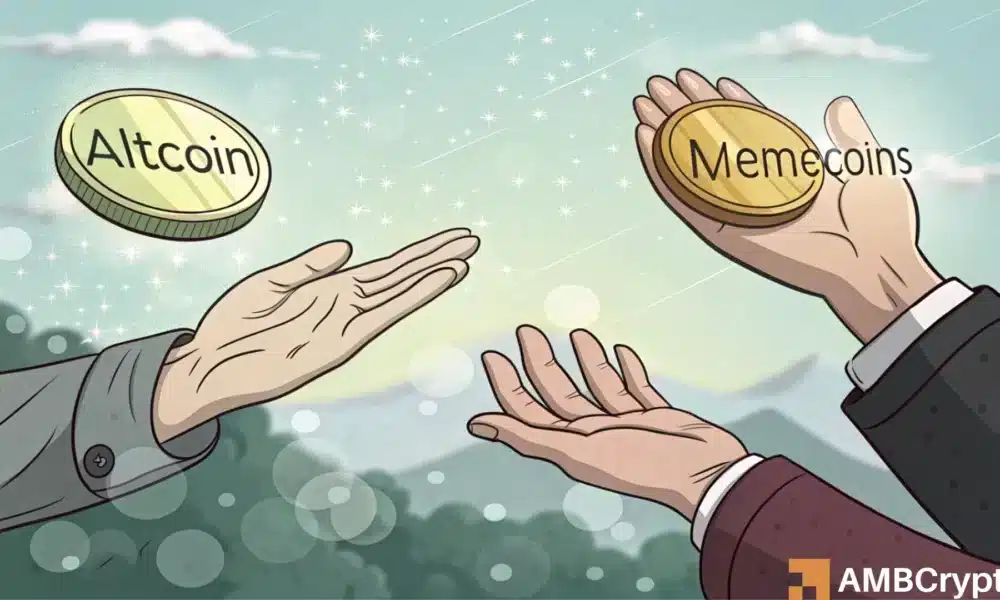While the majority of cryptocurrencies have experienced a surge in value following reports of Trump’s return to the White House, memecoins have faced challenges in keeping pace, igniting fresh discussions about their enduring lack of intrinsic value. In light of the performance of alternative digital assets, this argument appears to carry some validity.
Nevertheless, all hope for a turnaround may not be lost—memecoins have previously displayed resilience, thriving on enthusiastic community backing and hype. The pivotal question now remains: can that same fervor stimulate a change in trajectory, or are we observing the initial stages of a trend leading towards the waning appeal of memecoins?
The Leading Memecoin Might be Losing its Primary Strength
For a profound understanding of the volatility inherent in these tokens, Dogecoin [DOGE] emerges as a compelling case study. While many still associate DOGE with the buzz generated by prominent endorsements, it seems to be relinquishing its most potent asset—the robust support it once commanded.
Despite having an entire government department playfully named after this canine-inspired coin, the anticipated price surge never quite materialized. In fact, the coveted $1 price target appears to be increasingly elusive.
Could this signify a turning point for DOGE? A juncture where its community transcends mere hype and transitions into something more substantial—a cohort with a forward-looking vision?
Presently, the answer appears to be a resounding ‘No.’ A brief glance at its price trajectory narrates the tale—it remains largely speculative. A single downward price movement is adequate to nullify the gains from a series of positive ones.
As the foremost memecoin, boasting a market value surpassing the collective worth of other meme-inspired tokens, the prospect of memecoins overshadowing alternative cryptocurrencies in the near future seems dim.
Vulnerable to Market Manipulation
A recent report by CryptoCrypto has brought to light how significant entities with substantial interests are perpetuating DOGE’s entrapment within a consolidation phase, employing traditional manipulation techniques to forestall any breakout.
This leads us to a pivotal observation: Memecoins, like DOGE, heavily rely on community backing for sustenance—but paradoxically, this reliance engenders erratic price fluctuations.
Consider PEPE, for instance. Commanding a market cap of $9 billion, nearly “half” of its holdings are overseen by whale wallets, accounting for approximately 190 trillion tokens. These large holders wield the authority to influence the market at will, tilting the scales in their favor.
What further underscores this phenomenon is the enormity of their transactions—whether in purchases or sales—often registering in the billions or even trillions.
This textbook strategy of manipulation, involving discounted purchases and premium sales, ensnares memecoins in a perpetual cycle of volatility, leaving the market in a state of constant uncertainty and retail investors on tenterhooks.
In light of these factors, the expectation of these coins reaching new peaks next year might be overly optimistic.
The rationale is evident: besides forfeiting their allure as ‘practical-use’ assets, memecoins are grappling with various challenges.
Predominant entities manipulate the market, stifling their inherent potential, while their failure to evolve into bona fide stores of value heralds the ascendancy of alternative cryptocurrencies.

